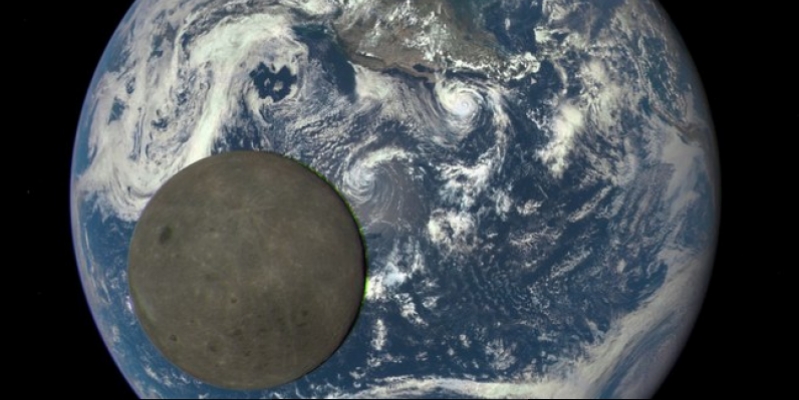Little known to NASA's space telescope DSCOVR (Deep Space Climate Observatory) recorded a unique and first of this kind in the history of the frame - as the Earth disc passing by the moon, the space telescope lens facing the Earth has never hidden his side.
For the moon to the Earth is turned, always in the same side. The frame is especially impressive because it illuminates the sun all the visible Earth and lunar disk.
Said space telescope DSCOVR video camera Epic (Earth Polychromatic Imaging Camera) constantly snapping completely illuminated side of the Earth and provide scientific data on atmospheric ozone, vegetation, high clouds and aerosols in the atmosphere.
The fragment length of 19 shots were recorded during the night of 16 July. on July 17., from 22:50 to 3:45 pm. Lithuanian time. At that time, the moon flew over the Pacific Ocean near the North American continent.
Land north pole is visible in the upper left corner of the image, and photography can be seen in the Earth's rotation axis tilt.
On the other side of the moon (erroneously referred to as the dark side of the moon) was seen for the first time only in 1959. When it captured a Soviet spacecraft Luna 3 Later, some NASA probes other side of the moon captured high resolution.
Meanwhile DSCOVR is much closer - it employs the first point of L1 from which to Earth is about 1.5 million. km. Lagrangian point - special orbital point where the person is in the body do not waste fuel or other energy to survive - at that point it keeps the forces of gravity counterweight.
(Lat. - Mare Moscoviense) - it is seen as a dark spot in the upper left part of the lunar disk, at 10 am. - And a little below, at 8 pm.
"Unexpected see that the Earth is much brighter than the Moon, - notes DSCOVR Adam Szabo project scientist at NASA's Godard Space Flight Center. - Our planet - a true diamond in the blackness of space, even in comparison with the bright surface of the moon."



